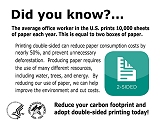Going Green - Weekly Tips
09-18-2012
 
Take the Stairs
09-12-2012
 
Chemical Management in Health Care Facilities
09-04-2012
 
Fuel Efficiency
08-27-2012
 
Bottled Water
08-20-2012
 
ANTHC Energy Efficiency
08-07-2012
 
Energy Efficiency
07-30-2012
 
Hospital Recycling Program
7-23-2012
 
Power Down Electronics
07-17-2012
 
Double-Sided Printing
07-11-2012
 
Environmentally Friendly Cleaning Products
06-26-2012
 
Reducing Energy Consumption in Hospitals and Clinics
06-18-2012
 
Meatless Meal Options
06-14-2012
 
Carpooling
06-04-2012
 
Reducing Medical Waste
05-29-2012
 
Junk Mail
05-22-2012
 
Task Lighting
05-12-2012
 
Indoor Air Quality
05-08-2012
 
Bike to Work Day 2012
05-01-2012
 
Paperless Billing
04-17-2012
 
Disposable Plastic Silverware
Back To Top
|